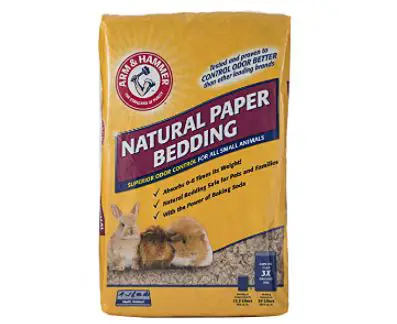How to Clean a Hamster Cage in just ten easy steps! If you are a hamster owner, and the time has come to clean the home of your furry little man, but you have no idea where to start or what to do about it? We hear you. When you have a hamster pet, you must provide the proper care for the little guy, including knowing how to clean a hamster cage.
As a responsible hamster parent, you ought to know that you need to ensure your hamster’s well-being; cleaning its cage provides a safe environment for its development and ensures your little friend stays with you for a long time. It becomes pretty important to learn how to clean a hamster cage and keep it as clean and as hygienic as possible.
Cleaning a tiny cage may sound like quite the hassle and even a little challenging, but you have nothing to worry about. Cleaning the cage of your hamster is not an impossible task. That said, the proper tools and the right steps must be followed. To help you in the right direction, learn everything you need to know about cleaning a hamster cage the right way below.
How to Clean a Hamster Cage in 10 Steps
Step 1
When ready to clean, move your hamster to a safe place outside their cages, such as a pet carrier or hamster ball.
Step 2
Remove all the bedding, disposing of the used material. Even if some of the bedding appears clean at first sight, it’s best practice to change all the bedding weekly for a fresh start and pristine habitat. Also, remove all food and water dishes, tunnels, wheels, and toys.
Step 3
Scrub the empty enclosure with mild soap, warm water, or cage cleaning solution. Instead of soap, you may also opt to wash the cage with vinegar.
Step 4
Make sure to rinse any residue away when done thoroughly. Set the cage aside to dry while you clean the rest of your hamster’s set-up.
Step 5
Cage cleaning is not complete until you have also washed all of your hamster’s toys, wheels, tunnels, and dishes.
Step 6
Once washed, rinse each item to ensure no soap or cleaning solution is trapped inside the items.
Step 7
Dry all pieces of the cage well. Leaving water behind may create soggy bedding or lead to mold developing.
Step 8
Provide your hamster with two to three inches of fresh, fluffy bedding. Place the clean toys, dishes, tunnels, and wheels back inside the cage.
Step 9
Once cleaning is complete, return your hamster to his fresh, clean home.
Step 10
Throw away all soiled bedding and any paper towels or disposable cloths you may have used to clean your hamster enclosure.
Best Tools and Products to Clean a Hamster Cage
In order to clean your hamster cage properly and easily you need to follow these steps using these top recommended products.
Tools:
- Cleaning gloves
- Rags or paper towels
- Garbage bag
- Safe cage cleaning solution
- Replacement bedding
Recommended Products
Household Cleaning Gloves
The reusable household gloves are made of environmentally grade PVC material, green and odorless. It is waterproof and resistant to low-concentration oil grease and light solvent.
The extended cuffs provide adequate barrier protection for the wrist and forearm from moisture and some liquids.
The non-slip embossed palm and fingers cleaning gloves offer an excellent grip to grasp wet and greasy dishes and gadgets during washing.

Features:
- Polyvinyl Chloride
- Reusable
- Latex Free
Citrus Magic Pet Foaming Pet Cleanser
Citrus Magic’s Foaming Pet Cleanser is the perfect cleaning product to use for hard-to-bathe pets. This pet shampoo replacement has a gentle formula created with vegetable enzymes.
These enzymes quickly and effectively clean and deodorize your pet’s coat. Citrus Magic’s Foaming Pet Cleanser is perfect for ferrets, hamsters, rabbits, and kittens.
The Foaming Pet Cleanser is also a great way to help remove odors from your pet’s coat in between regular washes. The 8-ounce bottle features an easy-to-use, foaming pump that dispenses the cleanser into your hand, allowing you to work it through your pet’s coat efficiently.

Features:
- Foaming cleanser
- Enzyme formula
- Fragrance-free
Arm & Hammer Natural Paper Bedding
Arm & Hammer Natural Paper Bedding is a multi-animal, all-natural product and is safe for your pets and your family. Just place two to four inches of bedding in the case or habitat, depending on the number of animals housed.
Perfect for heavy-duty use, this small pet accessory absorbs 6 to 8 times its weight, making it long-lasting and durable.
Natural bedding is free of toxins, sludge, or reclaimed pulp and is 99.9% dust-free.

Features:
- Heavy-duty
- Dust-free
Common Questions Regarding How to Clean a Hamster Cage
What can I use to clean my hamster’s cage?
Scrub the empty enclosure with mild soap and warm water or cage cleaning solution. Instead of soap, you may also opt to wash the cage with vinegar, but be sure to rinse any residue away when done thoroughly. Depending on the type of hamster cage you have for your pet, it may be helpful to take the cage apart.
How often do hamster cages need to be cleaned?
Once a week is advisable, and certainly at least once every two weeks. But you may want to have a clean-out more frequently than that.
Do hamsters get stressed when you clean their cage?
Ensuring you spot clean your hamster cage is often essential as a dirty cage will cause your hamster unneeded stress. By thoroughly cleaning your hamster cage, you are moving their whole home inside out, which can cause your hamster stress due to different smells and objects being carried.
Where do you put a hamster when cleaning the cage?
Put the hamster in the top compartment and push up the tube so that it can’t scurry back down into the main enclosure. You can then clean the bottom section without worrying about your furry friend.
What should you do every day for your hamster?
- Every day, spend a few minutes tidying up your hamster’s bathroom area and providing them with fresh food and water.
- To do so, use a scoop or a gloved hand to reach into the cage, remove any soiled material, and dispose of it in a bag. Replace what was removed with clean bedding material.
- As for the water and food dishes, washing them daily is essential since your pet is eating and drinking from them.
What are the risks of a dirty cage?
Cleaning your hamster’s home is a crucial aspect of maintaining your hamster’s health. Hamsters are sensitive creatures that require a clean house to stay healthy. If you neglect to clean your hamster’s cage, you might be responsible for it falling ill.
- Avoid some of the following illnesses that result from a dirty cage and keep your hamster healthy:
- Pododermatitis affects the foot, causing raised red patches and results from extended exposure to urine and feces.
- Wet-tail is an illness caused by stress, which a dirty cage can produce in your hamster. Wet-tail is a severe disease that can kill your hamster.
- Your hamster may also show signs of illness if it has a runny nose, weakness, or diarrhea.
Additional Tips on How to Clean a Hamster Cage
- Look for any droppings or wet areas in the bedding material. You can spot remove some areas. However, if there are a lot of them, you should change the bedding.
- If the cage smells, you must clean it thoroughly. Hamsters have a compassionate sense of smell and can fall ill if the cage is unclean or the air quality is too poor.
- If the enclosure walls look dirty or smudged, it may be time for complete cleaning.
- New bedding to place in the cage after you’ve cleaned it. Keep about a third of the bedding, so they don’t get stressed.
- Wash your hands before and after handling your hamster to protect both of you from spreading germs and getting sick.
- If your cage is a wire or mesh cage, make sure to clean each bar. Some cages are aquariums, and these will require you to clean each surface and corner thoroughly.
- Leaving the cage in the sun can help it dry faster. Sunlight can also help to disinfect the cage due to its UV light rays.
- Never use pine or cedar bedding as these materials can cause respiratory issues for your hamster.






